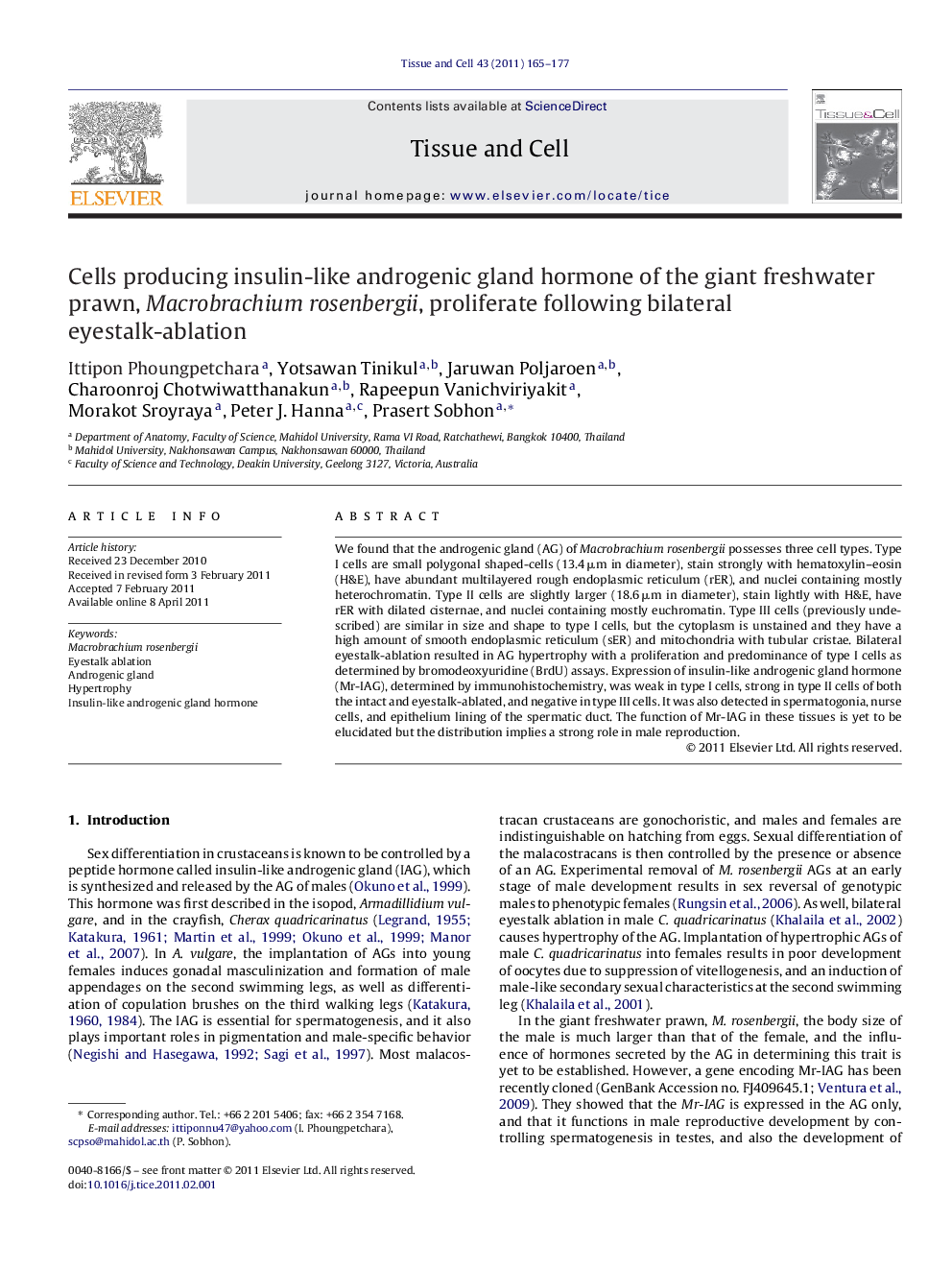| Article ID | Journal | Published Year | Pages | File Type |
|---|---|---|---|---|
| 2203868 | Tissue and Cell | 2011 | 13 Pages |
We found that the androgenic gland (AG) of Macrobrachium rosenbergii possesses three cell types. Type I cells are small polygonal shaped-cells (13.4 μm in diameter), stain strongly with hematoxylin–eosin (H&E), have abundant multilayered rough endoplasmic reticulum (rER), and nuclei containing mostly heterochromatin. Type II cells are slightly larger (18.6 μm in diameter), stain lightly with H&E, have rER with dilated cisternae, and nuclei containing mostly euchromatin. Type III cells (previously undescribed) are similar in size and shape to type I cells, but the cytoplasm is unstained and they have a high amount of smooth endoplasmic reticulum (sER) and mitochondria with tubular cristae. Bilateral eyestalk-ablation resulted in AG hypertrophy with a proliferation and predominance of type I cells as determined by bromodeoxyuridine (BrdU) assays. Expression of insulin-like androgenic gland hormone (Mr-IAG), determined by immunohistochemistry, was weak in type I cells, strong in type II cells of both the intact and eyestalk-ablated, and negative in type III cells. It was also detected in spermatogonia, nurse cells, and epithelium lining of the spermatic duct. The function of Mr-IAG in these tissues is yet to be elucidated but the distribution implies a strong role in male reproduction.
